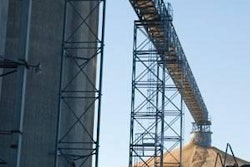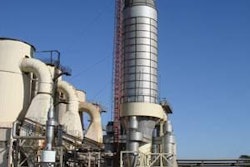
When considering a source of synthetic methionine, there are no shortages of options. A number of sources are available with varying degrees of effectiveness in meeting needs, depending on the goals of a particular diet formulation.
Clearly, conducting a balanced review of all available sources is key. While there are many forms available, the animal industry has continued to increase its use of HMTBa (2-hydroxy-4-methylthio) butanoic acid (a.k.a. methionine hydroxyl analogue free acid or MHA-FA) to approximately 50 percent of all methionine activity supplemented in animal feeds with a corresponding increase in manufacture of this molecule over other forms. Indeed, of the last four capacity expansions of methionine activity, three have been HMTBa expansions.
Compounds fully available
Yet confusion over the effectiveness of various methionine sources continues. There is a wealth of peer-reviewed publications that describe in detail the differences between DL-Methionine (DLM) and HMTBa with respect to absorption and metabolism. Taken in total, this research clearly supports the conclusion that each compound is fully available for use as a methionine source within the animal. While there is evidence to support the idea that DLM and HMTBa are metabolized differently, research results do not support the contention that HMTBa is inferior to DLM with respect to supplying methionine activity.
Confusion over HMTBa's effectiveness as a methionine source is generally based on a misunderstanding and misapplication of linear and exponential slope ratio bioavailability methods. These methods were developed to determine the relative bioavailability of a particular nutrient in different matrixes (e.g. lysine in wheat, corn and soybean meal) with a known standard. Thus, once the nutrient is available for absorption, all other aspects of metabolism are identical.
Method used
Clearly, this is not the case for HMTBa and DLM, and as a result the assumptions required for validity of these bioavailability methods (e.g. same mathematical form of dose response) cannot be accepted. Furthermore, research has shown that use of those methods for determination of relative biological effectiveness of HMTBa and DLM when the assumptions for validity are not met is inappropriate and leads to erroneous conclusions regarding the relative biological effectiveness of methionine sources. There are numerous examples of the inappropriate use of these methods in peer-reviewed literature. Use of the appropriate methods to compare effectiveness of these compounds has shown conclusively that the efficacy of HMTBa to achieve maximum animal performance is unsurpassed by DLM and offers significant opportunities for performance improvements beyond that of DLM.
Added value
There is great value in the fact that HMTBa is better described as a methionine precursor and that simple fact has led to discoveries that HMTBa expresses antimicrobial activity under the low pH conditions of the upper gastrointestinal system and can play an important role in permitting maximum growth rates and the reduction of food-borne pathogens prior to its enzymatic conversion to methionine.
Furthermore, HMTBa can serve as a bioactive organic ligand with superior binding characteristics under low pH conditions that can result in greater bioavailability of certain trace minerals. These additional activities of HMTBa have given rise to a number of products available to animal agriculture worldwide designed to modify the microbial populations in the gastrointestinal tract, as well as a line of highly available organic trace minerals, both of which deliver methionine value as well.





.jpg?auto=format%2Ccompress&fit=crop&h=167&q=70&w=250)











